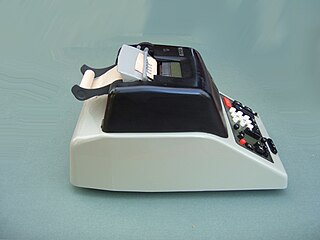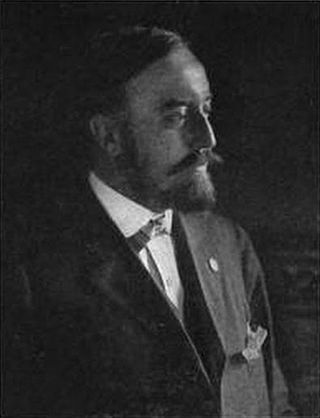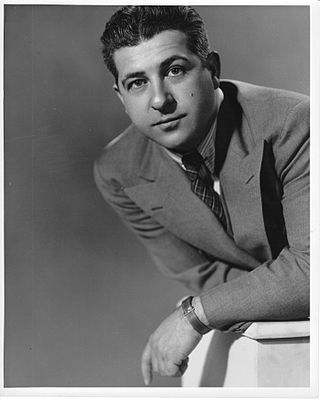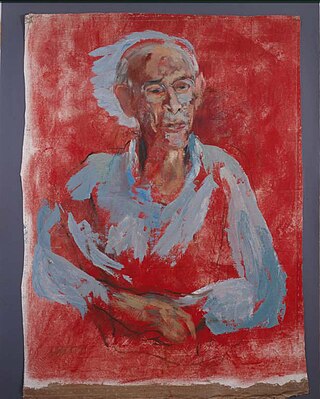Related Research Articles

The Staatliches Bauhaus, commonly known as the Bauhaus, was a German art school operational from 1919 to 1933 that combined crafts and the fine arts. The school became famous for its approach to design, which attempted to unify individual artistic vision with the principles of mass production and emphasis on function. Along with the doctrine of functionalism, the Bauhaus initiated the conceptual understanding of architecture and design.

Industrial design is a process of design applied to physical products that are to be manufactured by mass production. It is the creative act of determining and defining a product's form and features, which takes place in advance of the manufacture or production of the product. Industrial manufacture consists of pre-determined, standardized and repeated, often automated, acts of replication, while craft-based design is a process or approach in which the form of the product is determined personally by the product's creator largely concurrent with the act of its production.

George Sakier (1897–1988) was an American artist and industrial designer. A man of multiple talents, he originally studied at the engineering school of Columbia University and Pratt Institute. Having composed the text Machine Design and Descriptive Geometry at age 19, he went on to work as a camouflage technician during World War I. After the war he continued to work as an artist, combining technology with classicism.
Philip Martin Pearlstein was an American painter best known for Modernist Realist nudes. Cited by critics as the preeminent figure painter of the 1960s to 2000s, he led a revival in realist art.

Henry Hornbostel was an American architect and educator. Hornbostel designed more than 225 buildings, bridges, and monuments in the United States. Twenty-two of his designs are listed on the National Register of Historic Places, including the Oakland City Hall in Oakland, California and the Soldiers and Sailors Memorial Hall and Museum and University Club in Pittsburgh, Pennsylvania.

The School of Design at Carnegie Mellon University is a degree-granting institution within a private university in Pittsburgh, Pennsylvania, United States. The School of Design is one of five schools within the Carnegie Mellon College of Fine Arts offering both under and post graduate education. The School is accredited by Middle States Association of Colleges and Schools and awards BDES, MA, MDES, MPS, MII-PS, DDES, and PhD degrees. The School of Design has 21 full-time and 10 adjunct faculty.

John Vassos whose career as an American industrial designer and artist helped define the shape of radio, television, broadcasting equipment, and computers for the Radio Corporation of America for almost four decades. He is best known for both his art deco illustrated books and iconic turnstile for the Perey company, as well as modern radios, broadcast equipment, and televisions for RCA. He was a founder of the Industrial Designers Society of America, in 1965, serving as its first chairman simultaneously with Henry Dreyfuss as its president. Vassos' design philosophy was to make products that were functional for the user.

Joseph Claude Sinel also known as Jo Sinel or "Auckland Jo", was a pioneering New-Zealand-born American industrial designer. Referred to in his lifetime and since as the father of American industrial design, he established what many regarded as the country's first industrial design practice.
The Institute of Design at the Illinois Institute of Technology is a graduate school of the Illinois Institute of Technology, a private university in Chicago, Illinois, United States. Founded in 1937 as The New Bauhaus, the school focuses on systemic and human-centered design.
Tucker L. Viemeister is an American industrial designer, and founder of Viemeister Industries in New York. Tucker helped found many important design businesses: Smart Design, frog design's New York studio, Razorfish's physical design group, Springtime-USA, and was chief of the lab at the Rockwell Group.
Caples Jefferson Architects is an American design and architecture firm founded in 1987 in New York City by principal architects Sara Caples and Everardo Jefferson. The firm focuses on architecture in a public, cultural & community context, and is unique for its dedication to designing approximately half of its projects in communities underserved by the design profession.

Robert Lepper (1906-1991) was an American artist and art professor at Carnegie Institute of Technology, now Carnegie Mellon University, who developed the country's first industrial design degree program. Lepper's work in industrial design, his fascination with the impact of technology on society and its potential role for artmaking formed the background for his class "Individual and Social Analysis", a two semester class focusing on community and personal memory as factors in artistic expression, which with his theoretical dialogues with his most promising students outside the classroom fostered the intellectual environment from which such diverse artists as Andy Warhol, Philip Pearlstein, Mel Bochner, and Jonathan Borofsky would later build their art practices.

Peter Muller-Munk Associates was an American industrial-design firm that flourished in Pittsburgh under the direction of its charismatic name partner. PMMA's work touched almost every aspect of industrial design and were especially influential in the realm of consumer goods. Notably, U.S. Steel hired PMMA to work on the general aesthetic design for the Unisphere, the theme center of the 1964 New York World's Fair.
Hilde Reiss (1909–2002) was a German-born American architect and designer. She was the first curator of design at the Walker Art Center in Minneapolis, Minnesota. She founded the Everyday Art Gallery in 1946.
Louis Nelson is an American industrial designer and graphic artist who is best known for designing the Mural Wall for the Korean War Veterans Memorial on the National Mall in Washington.
Read Viemeister was an American industrial designer. He was the Creative Director for the Lippincott team working on the Tucker car in 1947, and the founder of Vie Design Studios in Yellow Springs, Ohio.

The Good Design exhibition series was an industrial design program organized by the Museum of Modern Art (MoMA) in New York, in cooperation with the Merchandise Mart in Chicago, held between 1950 and 1955. No awards were granted to designers whose work was put on view in these exhibitions, despite misinformation suggesting otherwise.
Rowena Reed Kostellow was an American industrial designer and professor. Alongside her husband, Alexander Kostellow, and other designers and artists, she co-founded the first industrial design education course at Pratt Institute.
John Pai is an American sculptor and Pratt Institute professor emeritus. Pai works primarily with welded metal, often creating freestanding sculptures with grid-like and curved natural shapes. After completing his Bachelor in Industrial Design (1962) and Master of Fine Arts in Sculpture at Pratt (1964), Pai began teaching at his alma mater in 1965 as the youngest ever professor appointed by the school. Retiring from teaching in 2000, Pai shifted to focusing on his artistic practice full-time. He now works and lives in Fairfield, Connecticut.
Lucia DeRespinis is an American industrial designer known for her work with George Nelson and her creation of the pink and orange Dunkin' Donuts logo.
References
- 1 2 3 4 5 6 7 Donnelly, Jim (September 23, 2018). "Car Culture: Alexander Kostellow". Hemmings. Retrieved 2023-12-29.
- 1 2 3 4 5 6 7 8 Hannah, Gail Greet (2006). Elements of design: Rowena Reed Kostellow and the structure of visual relationships. Design briefs (3rd pr ed.). New York, NY: Princeton Architectural Press. pp. 22–24. ISBN 978-1-56898-329-5.
- 1 2 3 4 5 6 7 Gantz, Carroll (2014). Founders of American industrial design. Jefferson, North Carolina: McFarland & Company, Inc., Publishers. pp. 70–72. ISBN 978-0-7864-7686-2.
- 1 2 3 4 5 6 7 8 Ayers, Ruth (December 17, 1933). "Having Conquered Many of Life's Toughest Storms, Artist Paints the More Beautiful Side on Canvas". The Pittsburgh Press. p. 37. Retrieved December 29, 2023.
- 1 2 3 4 5 6 Pulos, Arthur J. (1988). The American design adventure: 1940-1975. Cambridge, Mass.: MIT Press. pp. 166–168. ISBN 978-0-262-16106-0.
- ↑ "Rowena Reed Kostellow, FIDSA". Industrial Designers Society of America. Retrieved December 29, 2023.
- ↑ Gómez, Jaime Francisco (2010). "An Approach to the Figure and Aesthetic Ideas of Alexander J. Kostellow: Plastic Artist and Industrial Design Education Pioneer". Design Principles and Practices. 4 (1): 33–38. doi:10.18848/1833-1874/CGP/v04i01/37810. ISSN 1833-1874.
- ↑ Jones, Barbara (2011). "Samuel Rosenberg: Portrait of a Painter". The Pittsburgh Reader. Internet Archive. pp. 196–199.
- ↑ Jaffee, Barbara (2005). "Before the New Bauhaus: From Industrial Drawing to Art and Design Education in Chicago". Design Issues. 21 (1): 41–62. doi:10.1162/0747936053103066. ISSN 0747-9360. JSTOR 25223979. S2CID 57571973.
- 1 2 3 4 "Alexander Jusserand Kostellow, FIDSA". Industrial Designers Society of America. Retrieved December 29, 2023.
- 1 2 Glueck, Grace (2004-07-09). "DESIGN REVIEW; The Art of Making Things That Look Good and Work". The New York Times. ISSN 0362-4331 . Retrieved 2023-12-29.
- ↑ Akner Koler, Cheryl (2007). Form & formlessness: questioning aesthetic abstractions through art projects, cross-disciplinary studies and product design education. Doktorsavhandlingar vid Chalmers Tekniska Högskola. Göteborg: Chalmers Univ. of Technology [u.a.] pp. 157–159. ISBN 978-91-976644-6-2.
- ↑ Munro, Thomas; Balet, Leo (1941). "Comunications". The Journal of Aesthetics and Art Criticism. 1 (4): 73–81. doi:10.2307/426580. ISSN 0021-8529. JSTOR 426580.
- ↑ Krukowski, Lucian (1992). "Aufbau and Bauhaus: A Cross-Realm Comparison". The Journal of Aesthetics and Art Criticism. 50 (3): 197–209. doi:10.2307/431228. ISSN 0021-8529. JSTOR 431228.
- ↑ "Alexander Jusserand Kostellow". Industrial Design. 1 (5): 10. 1954 – via Internet Archive.